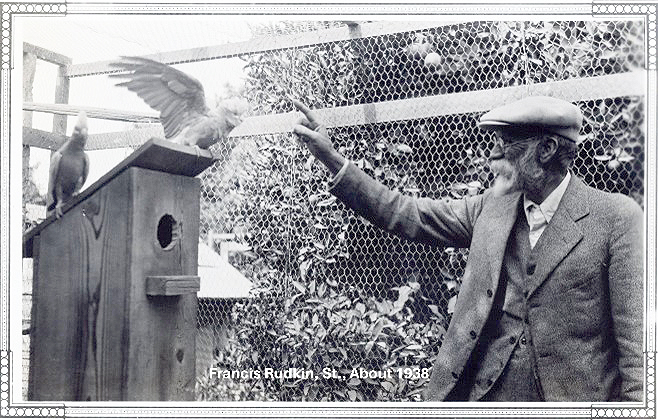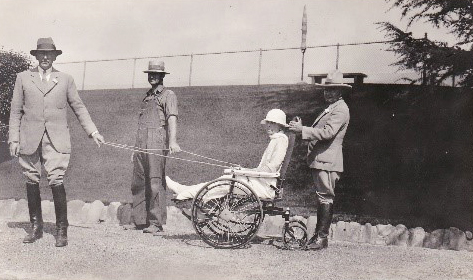|
Fillmore Historical Museum: It’s for the Birds
By Gazette Staff Writers — Friday, September 5th, 2025
 Pictured above is Francis H. Rudkin who came to the United States in 1912. He was a member of a bird fanciers’ organization in England in 1902 and helped found the Avicultural Society of America in 1927. Photo credit Fillmore Historical Museum.  Pictured above is Keith Spalding, left, with Eudora Hull Spalding in the wheelchair. Photo credit Fillmore Historical Museum. Courtesy Fillmore Historical Museum Birdwatcher, birder, ornithologist, Oologists, nidologists, aviarian, whatever word you choose it’s for the birds. People who are passionate about birds might have issues about what they themselves should be called. The 1930s seem to have been the heyday in Ventura County with several world class aviaries in the area. One belonged to Francis H. Rudkin, Sr. Mr. Rudkin came to the United States in 1912 after he had been told by doctors that his son would die if they did not move to a more temperate climate, eventually ending up in Fillmore. Mr. Rudkin had been a member of a bird fanciers’ organization in England in 1902 and helped found the Avicultural Society of America in 1927. Over the years he served the organization in many capacities including president. Mr. Rudkin was particularly known for birds which originated in Australia. These included blue masked love birds as well as parakeets and cockatoos. He also had a pair of lories which required a very special diet – milk and honey with boiled rice for bulk. This paid off as the pair eventually produced offspring. Mr. Rudkin had a pair of turquoise parakeets which were thought to be near extinction but the population in the wild is recovering. He also raised Abyssinian lovebirds, also known as black winged love birds. A 1940 Ventura County Star article said that Mr. Rudkin’s aviary was one of the few which could rival that of Mr. and Mrs. Spalding’s of Rancho Sespe. Mr. Rudkin died in 1956 but his fascination with birds continued with succeeding generations.0 Rancho Sespe was well known in the 1930s for approaching any thing grown on the ranch in a scientific manner. Meticulous records were kept of each individual tree being planted as to when it was planted, how it was fertilized, watered and pruned. The same was true of all the livestock on the ranch. It was also true of what started out probably as a hobby but turned into a business. The writer lauded Mr. Spalding for raising 500 pheasants and 1000 turkeys for breeding stock. In1928 several hundred were released around the county to augment the numbers for hunting. 200 more pheasants were released in August, 1929. Mr. Spalding also had several acres of riverbed planted in grain to attract migrating ducks and geese. It’s clear the Spaldings enjoyed hunting. The article concludes by mentioning Mr. Spalding had spent thousands of dollars on the aviary and the author hoped it someday would be open to the public. It is difficult to tell which of the Spaldings the aviary “belonged” to. The 1929 article referred to it as Mr. Spalding’s and Mrs. Spalding was never mentioned. A later article referred to it as Mrs. Eudora Hull Spalding’s “expensive hobby.” By 1940 the collection of birds grew in number and variety, and the physical aviary had expanded to more than 100 pens. A January 1940 Ventura County Star article starts out telling of the penguins and their care and feeding, but then goes into the diversity of the collection. Peacocks were probably the dominant variety. Bill Hunsinger, who was in charge of the aviary, developed a new strain, the Spalding peacock. If you do a search for Spalding peacocks you will see amazing emerald green and blue birds who are said to have the longest tail of any peacock. Hunsinger and his staff at the time of the article were breeding up to 50 peacocks a year. These would be sold to zoos and to private collections. Besides peacocks and penguins, the ranch also had cassowaries and tinnamou, both members of the ostrich family, although the tinnamous, unlike their cousins did have wings and could fly. Mrs. Spalding died in 1942. We don’t know how long the aviary kept going after her death and the upheaval of World War II. If anyone has any information, please share it with us. |
